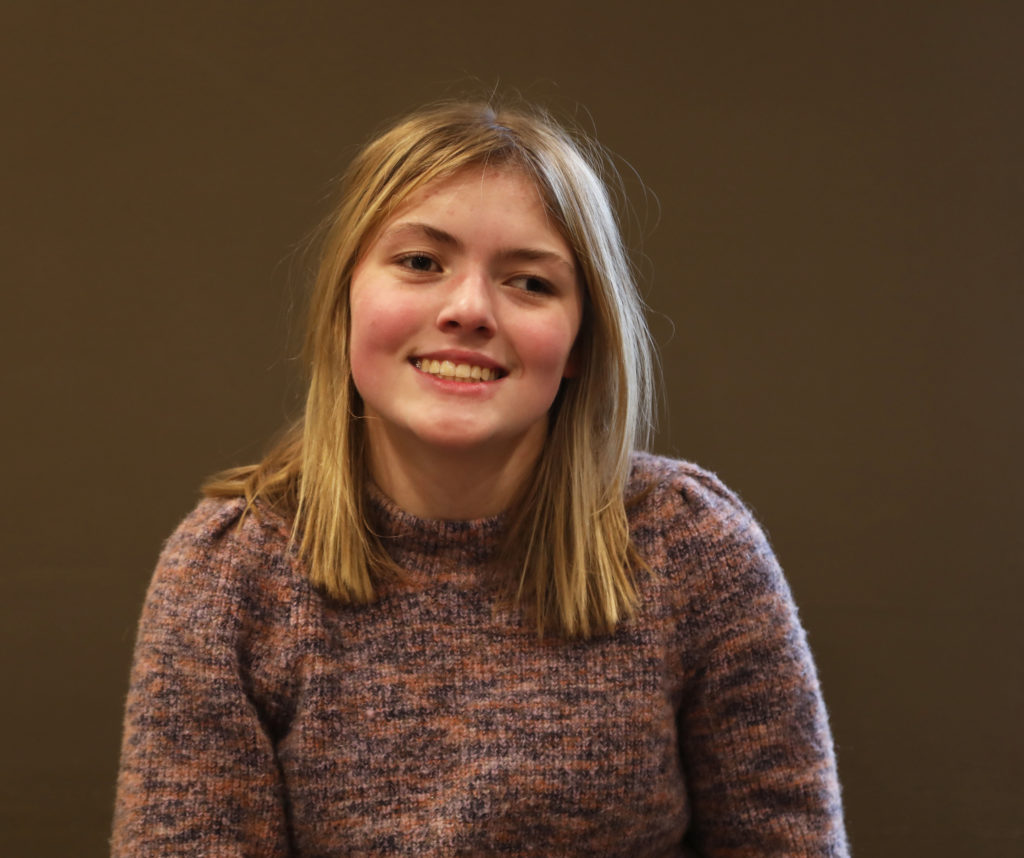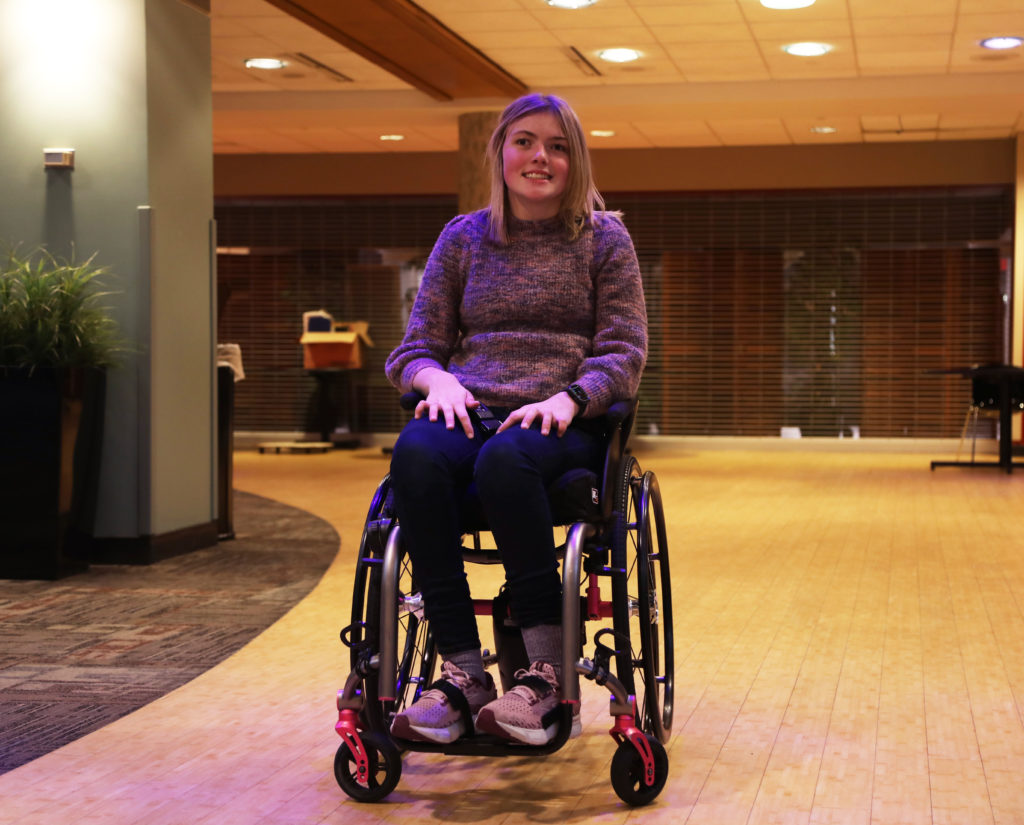“Nothing without us: disability is diversity.”
Ball State University’s director of Disability Services, Courtney Jarrett, holds this saying dear to her heart as she advises students with disabilities through their college experience. Jarrett says disability and accessibility have always been a part of the diversity definition on campus.
However, while Ball State strives for inclusive excellence, there are missed barriers hiding on campus that create omission among students with disabilities. Many students wouldn’t give these non-inclusive spaces a second thought, but for students with disabilities, questioning whether they’ll have proper access to a campus space is a daily challenge.
The Americans with Disabilities Act (ADA) defines a disability as any physical or mental impairment that substantially limits one or more major life activities.
Jarrett says the spectrum of disabilities is much larger than some may expect. It includes learning, mobility, hearing, and visual disabilities, as well as autism, depression, anxiety, and chronic health issues. Jarrett lives with chronic migraines that, at their worst, limit her ability to drive, work, and talk to others.
“Sometimes I just have to stay home and not look at a screen and be in a dark room for a while,” Jarrett says. “That puts me in the category of being a person with a disability.”
The ADA protects people with disabilities from discrimination with its standard for accessible design. Buildings and facilities must meet these standards to be physically accessible to people with disabilities. They exist to minimize architectural barriers and make navigating buildings readily achievable.
While every building on Ball State’s campus meets ADA regulations, Jarrett says that doesn’t mean there isn’t still more work to be done to make the campus more accessible.
“Because we are known for being physically accessible, the ADA is kind of like the floor for us. We can do better, and we will,” Jarrett says.
Freshman family and child life major, Anna Good, has cerebral palsy and uses a wheelchair and walker to get around campus. Experiencing a physically accessible campus is new for her. While attending high school in her hometown, Lafayette, Indiana, some of her accommodations were met, but at times, Anna ran into physical barriers.

Freshman family and child life major Anna Good poses for a photo Dec. 6, 2023 at Noyer Complex. Mya Cataline, Ball Bearings
“The elevator broke all the time,” Anna says. “People would have to carry me up the stairs.”
Disability Services makes it a priority to meet student’s accommodations, Jarrett says. They provide various accommodations for students with disabilities, including extended time on tests and quizzes, flexibility with attendance policies, and multiple technology-based tools that can help students take notes.
However, while Anna has had a positive experience with Disability Services, she’s still run into issues with classroom accommodations that she says could be prevented through communication between the office and professors.
“I wish they would tell professors if they have a wheelchair user coming in that way the rooms are accommodating to you,” Anna says. “I’ve run into that issue where they have a disability table, but it’s used for something else.”
Anna’s experience highlights the importance of equality versus equity. Karen Keddy, associate professor of the Department of Architecture, has been passionate about the topic throughout her teaching career. As a professor with a disability, Keddy says she tries to instill empathy in her students through educating them on the barriers people with disabilities have had to face.
“It’s one thing to say, ‘Well, we’ve got an accessible entrance at the back of the building, so somebody in a wheelchair can go into the back.’ It’s accessible, but that’s not equity,” Keddy says.
With her design knowledge, Keddy keeps an eye out for ways Ball State can be more accessible for students because overlooked issues can often turn into safety or health concerns.
One large issue Keddy’s found is the wearing down of tools that help students with disabilities navigate campus. She’s noticed the tactile attention indicators, bumps that indicate to people with low vision that they’re about to enter a road where there might be traffic, have been getting worn down over time and could potentially become a safety hazard.
According to Tactile Solutions, tactile indicators are designed to contrast with the ground surface, so people can detect them visually or with the help of a cane or their feet. If they’re worn down, they can’t be felt.
Another complication Keddy has noticed in one of Ball State’s newer structures, the Health Professions Building, is the lack of wayfinding accommodations for washrooms. While looking for the gender neutral bathrooms in the building, Keddy realized they were difficult to locate.
“You can imagine people with different disabilities, somebody with vision loss, somebody in a wheelchair, somebody using crutches, they don’t need to be walking around and around using up their energy trying to find where the washroom is,” Keddy says.
Freshman media major Liam Ealy has struggled with getting into buildings at times due to broken “push to open” activation buttons.
“A lot of the buttons sometimes don’t work at all, so you have to push them a particular way, and sometimes they don’t even open,” Liam says.
While all doors on the exterior of buildings have door openers, interior doors are not required to have one. As buildings are renovated on campus, not having buttons on some interior doors has put students with physical disabilities in difficult predicaments.
This past May, Cardinal Central was moved to the inside of the L.A. Pittenger Student Center. When it was unveiled without a door opener, Jarrett recognized that the door would cause issues for students with disabilities. Because of the design of the door, it’s taken the university months to find a way to install a door opener on it.
“That is a place where every single Ball State student is expected to visit at some point,” Jarrett says. “There are folks on our campus right now, chair users, that cannot get that door open.”
During the summer, the Hargreaves Music Building was renovated and heavier doors were put inside the building to block sound from traveling from the music building to Emens Auditorium. Jarrett says she’s received complaints from music majors who are also wheelchair users because the doors are too heavy for them to open.
With colder months ahead, freshmen with disabilities must learn to travel during a harsh winter. Anna worries that this winter, the cold weather will cause more strain on her body because she has high spasticity, which, according to the American Association of Neurological Surgeons, causes muscles to stiffen or tighten, preventing fluid movement.

Freshman family and child life major Anna Good poses for a photo Dec. 6, 2023 at Noyer Complex. Mya Cataline, Ball Bearings
“When going on campus today, I had a flare up during class,” Anna says. “It was easier in high school because I got picked up and dropped off at the door.
Her flare ups manifest themselves as “intense pain” that travels through her legs, and if they occur during class, she is forced to sit through them until she can get back to her dorm. Disability Services does provide shuttles that can drive students with disabilities to and from class. However, students must call 30 minutes beforehand to request a ride.
While Ball State does physical accessibility well, Jarrett says, accessibility goes beyond just physical aspects. Keddy teaches her students about the significance of social participation as a person with a disability.
“It’s really important for people to understand that if there are barriers for people with disabilities, then they can’t participate socially, and that’s real inequity,” Keddy says.
As a member of the executive board for the Alliance for Disability Awareness club, Anna says the club is working on bringing adaptive sports to campus, so students with disabilities can continue the sports they enjoy.
Anna did find an opportunity to stay active on campus and joined the Judo Club. She’s had a positive experience being a part of the club and encourages other students with disabilities to become involved in campus life through joining organizations.
“I recommend for a student that has a disability that wants to get involved in a club to just reach out to the people in it and tell them your strengths and weaknesses. They can most likely accommodate you,” Anna says.
This past summer, for the first time ever, Disability Services hosted a bridge program for students with disabilities that allowed them to become more acclimated to living on a college campus. Students moved onto campus three days early, learned how to get to their classes, got their textbooks for the semester, and were able to build friendships before the school year started. Jarrett says it has been a joy to see them keep in contact and experience many of their “college firsts” together.
“They started a group chat, they all went to the first football game together, they went to pride,” Jarrett says.
However, the summer bridge program is one of the only opportunities Disability Services provides that isn’t free. They’ve begun fundraising to help families of students with disabilities afford the program and are working toward creating a scholarship that will minimize a money barrier.
Jarrett says Disability Services will continue to strive to get students with disabilities acclimated to college through advocating for any accommodations they might need, whether it’s physical or social.
To donate to Disability Services, visit their webpage.
Check out Dillon Rosenlieb’s personal essay, One Roll at a Time, on his experience in education as a student with cerebral palsy.
Sources: ADA National Network, ADA.gov, Medium, American Association of Neurological Surgeons




